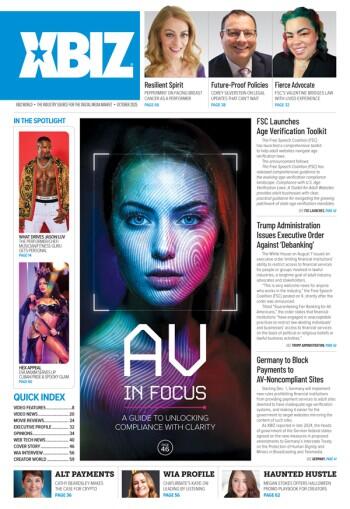LOS ANGELES — As online video ads become increasingly important components of today’s advertising ecosystem for both adult and mainstream companies, a growing number of criminal scam artists seek to steal countless Dollars, Euros and Yen flowing through ad networks and exchanges — using automation, deception and fraud to carry out their crimes.
It is a digital version of the classic “shell game,” where you pay your money and hope to guess which of three walnut shells has a pea hiding under it — while a huckster uses sleight of hand to hide the truth. Except in this case, the pea is a targeted website visitor and the shell is the website that you are paying to run your advertising on. The huckster of course is the advertising network that you contracted with and the empty shells are just that — bogus websites that do not contain real visitors but which you pay good money for in hopes that you will find the desired pea lurking under that specific shell. In both the real and virtual versions of this “game,” not paying close attention is a fast way to lose all your money.
According to a report from comScore, fraud is the elephant in the digital room, forming an undeniably large and growing problem for online advertising, with an average of 0.16 percent of impressions across all campaigns delivered to non-human agents. While this percentage seems negligible, the report covers only basic forms of inappropriate delivery — and with nearly $50 billion in yearly digital ad sales in the U.S. alone, it means that fraudulent online ads cost U.S. businesses around $800 million in annual losses.
When including sophisticated types of fraud, these numbers grow quickly, making fraud an important concern for all advertisers. In fact, the comScore study shows little to no correlation between the cost per thousand visitors (CPM — a common metric for ad buys), and the value delivered to the advertiser.
“For example, ad placements with strong in-view rates are not getting higher CPMs than placements with low in-view rates. Similarly, ads that are doing well at delivering to a primary demographic target are not receiving more value than those that are not,” the comScore report notes. “In other words, neither ad visibility nor the quality of the audience reached is currently reflected in the economics of digital advertising.”
To make it simpler, when buying ads you are often not getting what you hope or think you are.
“Neither side of the industry has had a clear picture of ad delivery, resulting in a lack of confidence in digital’s ability to deliver on its promise as the most measurable advertising medium. With 31 percent of impressions not being viewable, it is now abundantly clear just how important in-view measurement is to online campaign validation,” the report adds. “While audience and geographic validation are crucial — and should not be ignored — if a digital campaign rating does not also take into account whether or not the ad had the opportunity to be seen, then the metric fails to deliver a true apples-to-apples comparison to all other media.”
From single-pixel websites that serve up videos too tiny to view with the naked eye, to web-crawling robots that generate artificial ad impressions and server-based “drone pools” that serve to defraud advertisers and the ad networks that they rely upon, digital media advertisers are now dealing with a wide range of deceitful practices. These scams are hard to combat due to falsified domain registrations and criminals operating in regions beyond U.S. law, where click- and other ad fraud may not be illegal.
As for the scope of the problem, not only are video ads reportedly particularly vulnerable to fraud, their use is growing quickly — with comScore finding 188.2 million Americans viewed 52.4 billion videos this past December, compared to 181.7 million American viewers watching 39 billion videos during the same time period a year earlier.
A recent article in the Wall Street Journal details the losses incurred by top-tier advertisers, citing a stat from Medialink president and COO Wenda Harris Millard, who states that up to 25 percent of online ad expenses are “wasted on fraud and piracy.” The WSJ story also cites comScore’s finding that nonhumans generated 36 percent of online ad views, known as “impressions.”
As for the motivation of criminals, video ads can cost $30 per thousand views, compared to 20 cents per thousand views for a static banner ad — with experts predicting that spending on web video ads will rise to more than $8 billion by 2016, most of which will be earned by sites such as Hulu, Yahoo and YouTube. Minus these mainstays, however, there remains many ad dollars up for grabs.
While these popular mainstream channels may be of limited use to adult marketers, other options exist — but the further down the path of “alternative” traffic sources an advertiser travels, wittingly or otherwise, the greater the chance that they will be victimized by fraud. This is especially true when considering that an ad put on a specific network may be passed off to multiple other networks via ad exchanges — adding steps to a process that separates advertisers and publishers from accountability.
“For example, an ad can start with an established ad exchange, which sells it off to a less well-known firm, which ultimately sends the ad to a shell website — an action that takes place in the blink of an eye, with little, if any screening,” states the WSJ news report. “Many of these transactions are automated, so exchanges aren’t even aware of what companies are buying what inventory.”
Understandably, ad exchanges do not wish to dwell on the issue of systemic fraud, but Spotxchange confides that it blocks from 10 to 15 percent of its ad inventory due to fraud. This only address a fraction of the fraud perpetrated through ad networks, however, which receive tremendous pressure to make good on the promises of visitor volume and timeliness of delivery they make. This in turn makes relying on outside fulfillment of ad buys and sales a practical necessity for networks — regardless of how many links are in the fulfillment chain.
The reality of the situation can cause network operators to look the other way regarding fraud.
“Everyone along the chain makes money,” Dstillery CEO Tom Phillips told WSJ. “More volume [means] more money.”
Any nod and a wink towards click fraud and other bogus advertising practices may be short-lived as advertisers are becoming more knowledgeable about fraud, and paying closer attention to how and where their ad dollars are spent. This extra care is translating into more specifically worded contracts, where advertisers not liable for paying for bogus clicks, non-viewable ads, video ads playing without volume and other offenses. It also translates into lower overall ad spends.
According to Association of National Advertisers CEO, Bob Liodice, many advertisers are watching their digital advertising budgets, measuring results, and seeking ways to mitigate fraud and reduce ad costs, saying that “When you bundle bots, clicks fraud, viewablity and the lack of transparency [in automated ad buying], the total digital media value equation is being questioned and totally challenged.”







